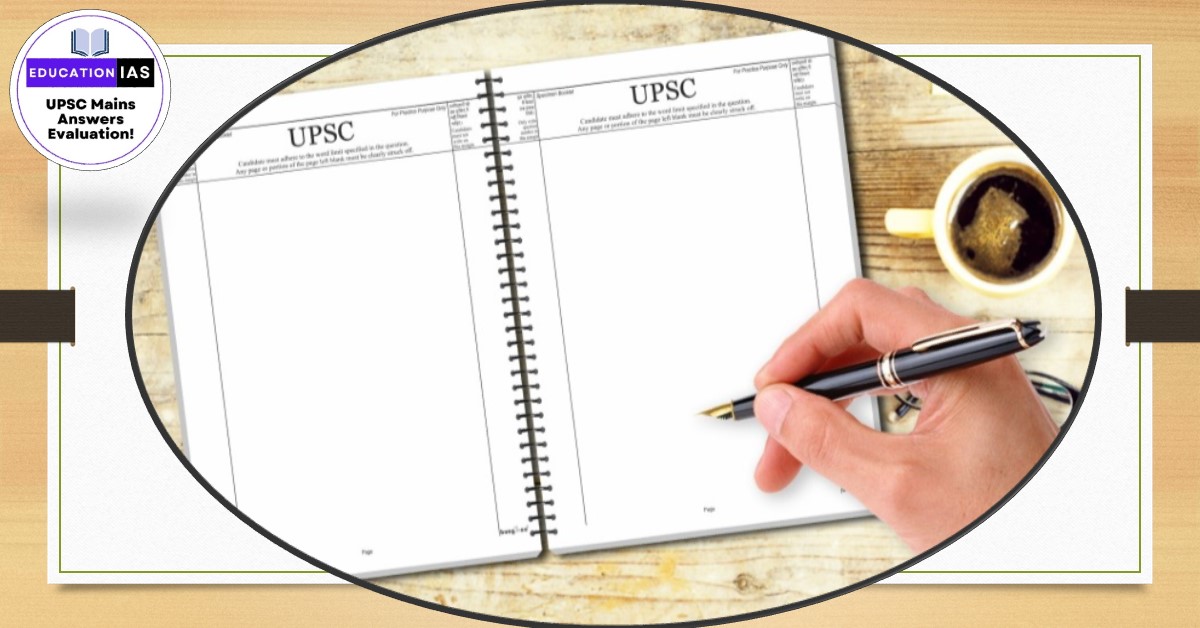Que. Why is the world today confronted with a crisis of availability of and access to freshwater resources?
आज विश्व ताजे जल के संसाधनों की उपलब्धता और पहुँच के संकट से क्यों जूझ रहा है?
Structure of the Answer
(i) Introduction: Highlight the significance of “freshwater resources” and the factors contributing to the global crisis of availability and access today.
(ii) Main Body: Examine the key causes of the freshwater crisis, including “population growth,” “climate change,” “pollution,” “inefficient management,” and “socio-economic disparities.”
(iii) Conclusion: Summarize the urgency of addressing the freshwater crisis through sustainable management practices, highlighting the need for global cooperation and innovative solutions.
Introduction
“Freshwater resources” are essential for human survival, agriculture, and industry. However, the world today faces a crisis in their availability and access due to factors like “climate change,” “overpopulation,” “pollution,” and “poor water management,” impacting global water security.
Escalating Demand Driven by Population Growth
The global population’s rapid growth is a primary driver behind the increasing demand for freshwater resources, intensifying the existing crisis.
(i) Population Surge: The Earth’s population exceeds “8 billion,” with projections suggesting it may reach “9.7 billion” by 2050. This surge demands more water for drinking, sanitation, and food production.
(ii) Urban Migration: With more people migrating to cities, the urban population is expected to reach “68% by 2050.” Urban areas often face heightened competition for limited freshwater supplies.
(iii) Agricultural Expansion: Agriculture consumes about “70% of global freshwater,” and as populations grow, the demand for food rises, leading to intensified agricultural practices that further strain water resources.
(iv) Industrial Growth: Industrial sectors require significant water for processes and cooling. As economies develop, the increasing demand for industrial water exacerbates the competition for freshwater resources.
(v) Increased Lifestyle Consumption: Growing middle-class consumption patterns, especially in developing nations, lead to higher water-intensive goods demand, further pressuring freshwater availability.
Impact of Climate Change on Water Availability
Climate change significantly alters the patterns of freshwater availability, contributing to the ongoing crisis and complicating future water management strategies.
(i) Altered Rainfall Patterns: Climate change results in unpredictable rainfall patterns, leading to increased flooding in some areas and prolonged droughts in others, disrupting freshwater supplies.
(ii) Glacial Melt: Many major rivers rely on glacial melt for their flow. Climate change accelerates glacial retreat, threatening long-term freshwater availability for millions who depend on these rivers.
(iii) Intensified Droughts: Higher global temperatures increase evaporation rates, exacerbating drought conditions and reducing the availability of freshwater in regions already experiencing water stress.
(iv) Extreme Weather Events: Climate change increases the frequency of extreme weather events, such as hurricanes, which can contaminate freshwater supplies with saltwater or pollutants, complicating water management efforts.
(v) Impact on Ecosystems: Changing climate conditions threaten freshwater ecosystems, affecting biodiversity and the health of aquatic habitats, which are essential for maintaining clean water sources.
Pollution Compromising Water Quality
Pollution presents a major challenge that compromises the availability and safety of freshwater resources, contributing to the global crisis.
(i) Industrial Pollution: Factories often discharge untreated waste into rivers and lakes, contaminating freshwater sources and making them unsafe for human consumption and agricultural use.
(ii) Agricultural Runoff: The use of chemical fertilizers and pesticides in farming leads to runoff that carries harmful substances into waterways, degrading water quality and affecting aquatic life.
(iii) Sewage and Wastewater: Inadequate sewage treatment and disposal result in untreated waste contaminating freshwater supplies, creating public health crises and further diminishing water quality.
(iv) Plastic Pollution: Plastic waste accumulation in water bodies poses serious risks to freshwater ecosystems, affecting aquatic life and the safety of drinking water sources.
(v) Emerging Contaminants: Pharmaceuticals and personal care products often enter freshwater systems, leading to contamination that impacts both human health and aquatic ecosystems.
Socio-Economic Disparities in Access to Water
Disparities in wealth and infrastructure lead to unequal access to freshwater resources, intensifying the crisis in vulnerable communities.
(i) Economic Inequality: Wealth disparities result in unequal access to clean water. Poorer communities often lack the financial resources to secure safe water supplies, while wealthier areas thrive.
(ii) Infrastructural Deficiencies: Many regions lack the infrastructure necessary to deliver freshwater effectively. Aging water supply systems contribute to wastage and reduced access for marginalized communities.
(iii) Political Instability and Conflict: In regions experiencing political turmoil, water supply systems can be disrupted, exacerbating existing shortages and hindering efforts to manage freshwater resources effectively.
(iv) Indigenous Rights and Access: Indigenous communities often face challenges regarding their rights to water resources, as external pressures from industries and governments encroach upon traditional water sources.
(v) Displacement Due to Water Scarcity: Water shortages can lead to forced migration, as individuals and families seek more reliable freshwater sources, resulting in conflicts in receiving areas.
Conclusion
Addressing the freshwater crisis requires urgent action through sustainable management practices, conservation, and innovative solutions. Global cooperation is essential to ensure equitable access to water, protect ecosystems, and secure freshwater resources for future generations, mitigating the growing crisis.
